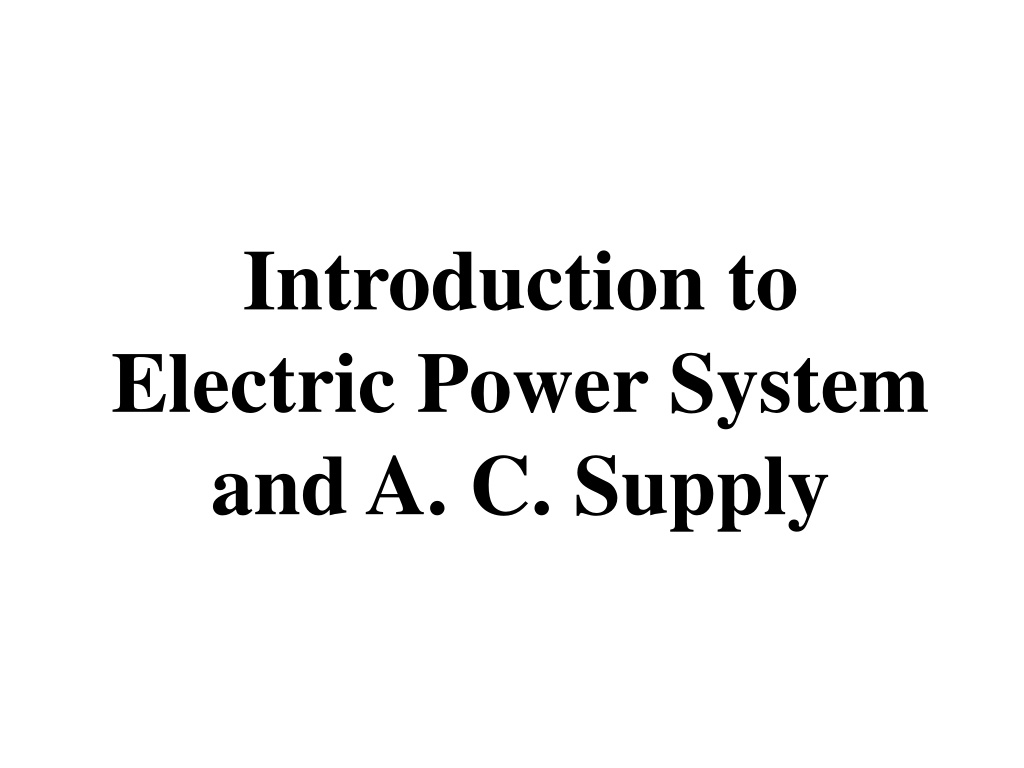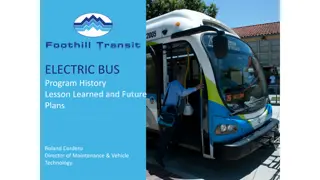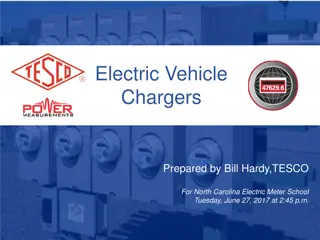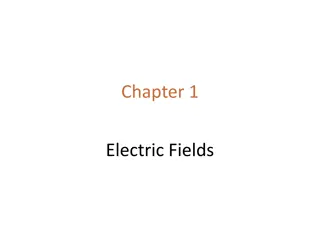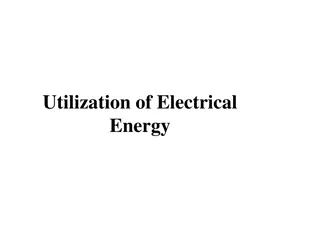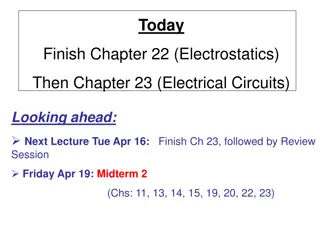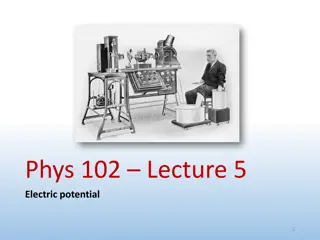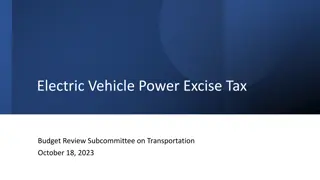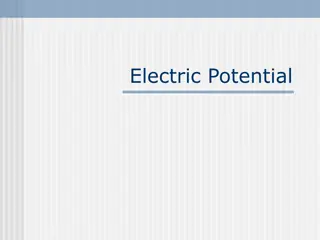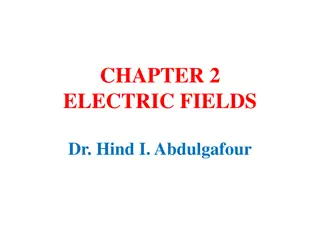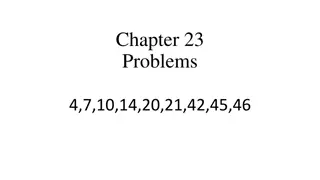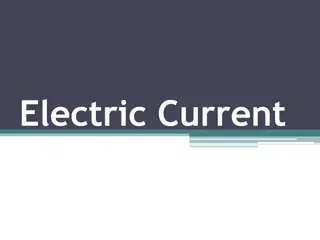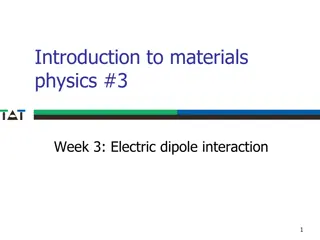Understanding Electric Power Systems and A.C. Supply
Exploring the basics of electric power systems, including A.C. and D.C. supplies, circuit parameters, differences between A.C. and D.C. quantities, and the subdivisions of electrical power supply systems such as generation, transmission, and distribution systems. Learn about generating systems, both conventional and non-conventional, and their importance in producing electrical energy from various sources like thermal, hydro, and nuclear. Gain insights into the design of machines, applications of A.C. and D.C. quantities, and the role of transformers in distribution efficiency.
Download Presentation

Please find below an Image/Link to download the presentation.
The content on the website is provided AS IS for your information and personal use only. It may not be sold, licensed, or shared on other websites without obtaining consent from the author. Download presentation by click this link. If you encounter any issues during the download, it is possible that the publisher has removed the file from their server.
E N D
Presentation Transcript
Introduction to Electric Power System and A. C. Supply
Course outcome C403.1 : Determine electrical quantities of AC supply and circuit parameters of R-L and R-C circuits.
Introduction In the day to day life, we use electrical power for various applications including the domestic & industrial applications. For most of the domestic applications, we use a single phase ac supply. For high power industrial applications, the three phase ac supply is used. For certain domestic applications such as telephones, the dc supply is used. For certain applications such as electric trains, a high voltage DC system is used.
Difference between AC & DC Quantities Sr. No. 1. Parameter AC DC Waveform 2. Definition It is a signal which changes its magnitude as well as polarity. Possible It is a signal which changes its magnitude but does not change its polarity. Not possible 3. Use of transformer Distribution efficiency 4. High Low
Continued Sr. No. 5. Parameter AC DC Design of machines Generation Easy Not easy 6. Easy From the ac waveform using commutator or rectifier DC machines, HVDC system 7. Applications AC motors, domestic & industrial supply etc.
Electrical Power Supply System The electrical power supply system can be subdivided into three subsystems, as follows: 1. Generation system. 2. Transmission system. 3. Distribution system. The electrical energy generated by the generating system is transmitted to the load centres by the transmission system. This energy is then distributed to the distribution system.
Generating System The function of generating system is to generate electrical energy. The input to such a system may be thermal energy, hydro-energy or nuclear energy. The generating systems are broadly classified into two types: 1. conventional system 2. Non-conventional system
Conventional System Conventional generating systems are those which take non-renewable source of energy as the raw material. The conventional systems are classified as follows: 1. Thermal system: Converting heat energy of fuels like coal, petrol etc. into electrical energy. 2. Hydroelectric system: Converting potential energy of stored water into electrical energy.
Continued 3. Nuclear system: fission reaction into electrical energy. 4. Diesel electric system: Converting energy stored in diesel into electrical energy. Converting heat obtained by nuclear
Non-conventional System Non-conventional systems are those which use renewable source of energy as the input. The non-conventional systems are classified as follows: 1. Solar energy 2. Wind energy 3. Tidal energy 4. Energy from biogas etc.
Extra High Voltage Transmission System (EHVAC) The increased demand of electricity needs more generation of electrical power. As the generation takes place at remote places, an efficient distribution system is necessary. Fig. 1. shows the simplified block diagram of the extra high voltage AC transmission system. This system can be broadly divided into two parts: a. Transmission system. b. Distribution system
Step up transformer 132 kV Step down transformer 33 kV 33 kV 400/230V Fig. 1: Basic EHVAC system
Transmission System Transmission system is further divided as: 1. Primary Transmission 2. Secondary Transmission. 1. Primary Transmission: As shown in fig. central station/ generation system generates power using three phase alternators at 6.6/11/13.2/32kV. This voltage is then stepped up by suitable three phase transformer, to 132 KV. This voltage is stepped down to 33 kV using step down transformer which is at receiving station.
Continued 2. Secondary Transmission: From receiving station, power is then transmitted at 33 kV by underground cables to various substations (ss) located at various points in the city. This known as secondary or low voltage transmission. At the substations, this voltage is further reduced from 33kV to 3.3/11kV, using step down transformer.
Distribution System Distribution system is further divided as: 1. Primary Distribution 2. Secondary Distribution. 1. Primary Distribution: The output of substation at 3.3/11 kV can be directly given to a customer whose demand exceeds 50 kVA using special feeders. This is primary distribution.
Continued 2. Secondary Distribution: The secondary distribution is done at 440/400/230 V. The reduction in the voltage level from 3.3kV to 400/230 V is done by the step down transformer at the distribution substations.
Types of Transmission & Distribution System The transmission & distribution systems are classified as: 1. AC System 2. DC System.
AC Power Transmission AC power transmission is the transmission of electric power by alternating current. Usually the transmission lines are three phase AC current, whereas, in electric railways, single phase AC current is sometimes used for railway rectification system.
Advantages of AC System 1. High voltage can be built-up. 2. The fluctuation in the voltage level as per requirement can be done using step-up and step-down transformers. 3. Maintenance cost of substations and generation cost of AC voltage is low. 4. The motors used are simple in construction & have low maintenance. 5. Maintenance of substation is cheap.
Disadvantages of AC Systems 1. The initial set up is very expensive. 2. The resistance offered by the lines is high which cause skin effect and thus leading to voltage drop. 3. The AC lines are more sensitive to corona. 4. The AC lines even show losses due to reactance offered by the line. 5. The speed of alternator requires to be controlled.
DC Power Transmission For many reasons power is generated, transmitted, distributed and consumed as an alternating current. But, if certain applications need the use of DC, the AC was converted to DC locally by motor generator sets, rotary converted to DC locally by motor generator sets, rotary convertors etc. There are certain advantages or technical reasons too associated with the DC system, which are as follows: 1. Due to large charging currents, the use of high voltages AC for underground transmission over longer distance is prohibited. But, for DC there is no such limitations.
Continued 2. Parallel operations of AC with DC increases the stability limits of the system. A DC transmission line requires converters at each end, i.e. at the sending end where AC is converted into DC and at receiving end where DC is again converted to AC for use.
Advantages of DC Transmission 1. The line construction is simple. Hence, the line is cheaper as compared to AC. 2. The power per conductor of DC is more as compared with AC. 3. There is no charging current required because of which the length of transmission is not limited and the cable need not be derated. 4. The DC line is cheaper & simpler as it requires two conductors instead of three. 5. High operating voltages possible. 6. No stability problem.
Disadvantages of DC Transmission 1. Expensive converters. 2. The power transmitted can be used at lower voltage only. 3. Voltage transformation is not easier in case of DC and hence it has to be done on the AC side of the system. 4. Circuit breaking for multi-terminal lines is difficult.
Applications of DC Transmission 1. Long distance bulk power transmission. 2. Under ground or under water cables. 3. A synchronous interconnection of AC system operating at different frequencies or where independent control of systems is desired.
Battery as DC Supply For many applications, we need to use a low voltage DC source. The battery is used as DC power supply for such applications. The batteries can be of different types as: 1. Lead acid battery. 2. Nickel cadmium battery. 3. Dry battery. 4. Maintenance free battery.
Continued V v1 v2 v3 v4 (a) Symbol (b) Batteries in series v1 v2 v3 v4 (c) Batteries in parallel
Continued Fig. (a) shows the symbol of a battery. As shown in fig. (b), we can connect batteries in series so as to increase the terminal voltage whereas they can be connected in parallel as shown in fig. (c) so as to increase the current sourcing capacity. Applications: 1. Torch 2. Radio, music system, laptop, computers. 3. Cars, two wheelers & other vehicles. 4. UPS system.
Utilization of Electrical Power The electrical power has number of applications or utilization areas . It is used in domestic as well as industrial applications. Following are some of the applications of electrical power: 1. Domestic applications such as lighting, fans, heaters, irons, TV etc. 2. AC & DC motor drives. 3. Machine tool applications. 4. Electrically operated vehicles, trains, cars. 5. Welding 6. Induction heating & dielectric heating. 7. Electroagro systems.
